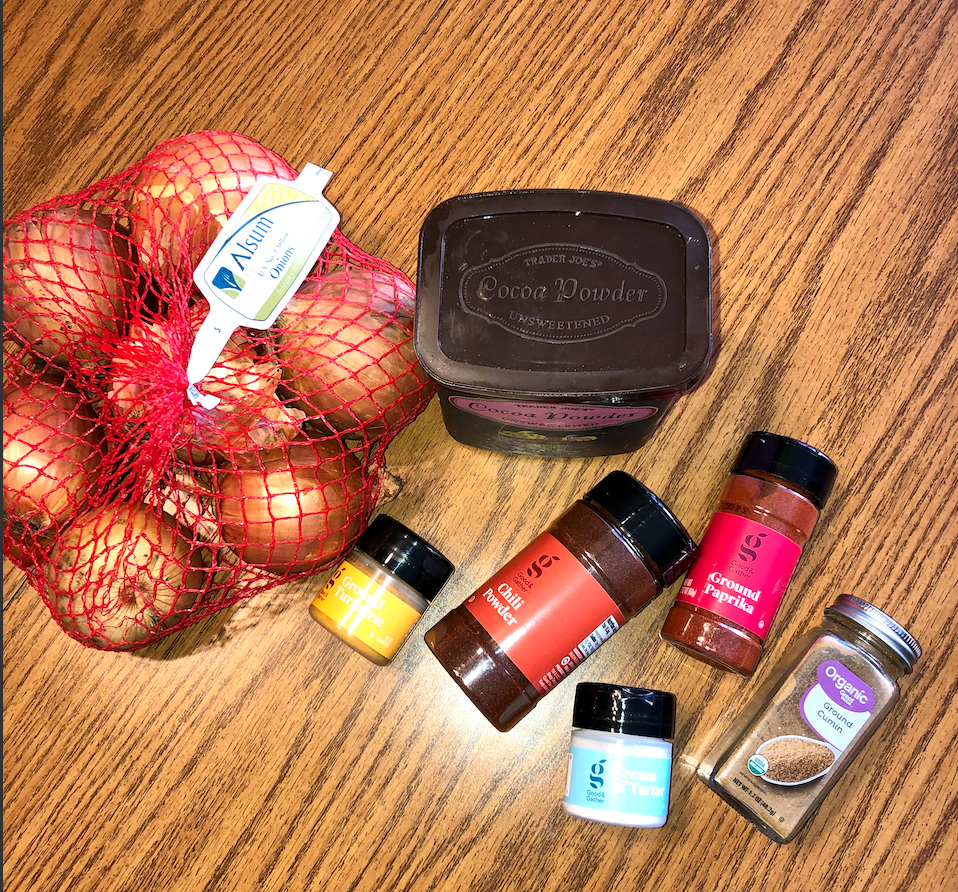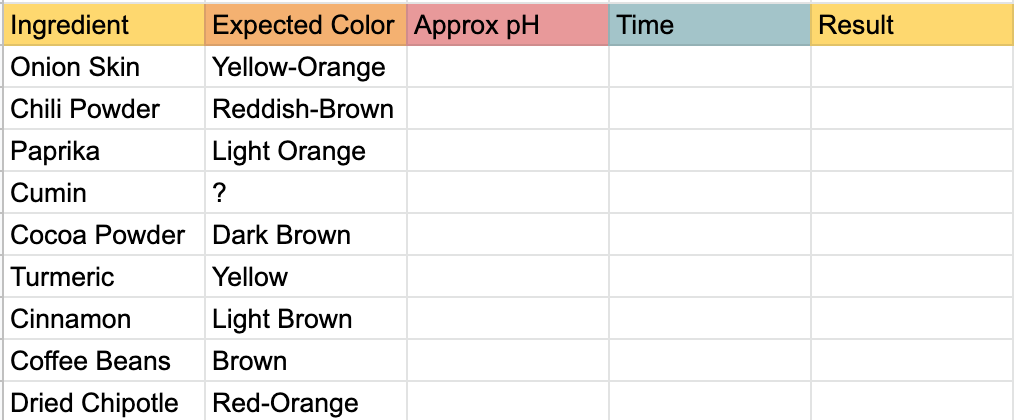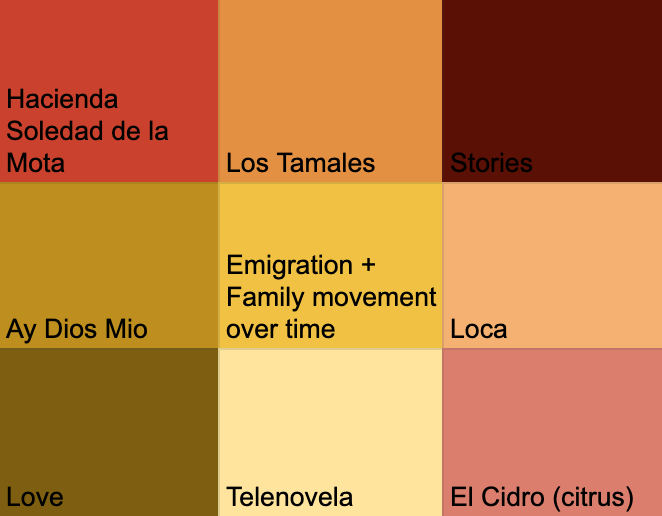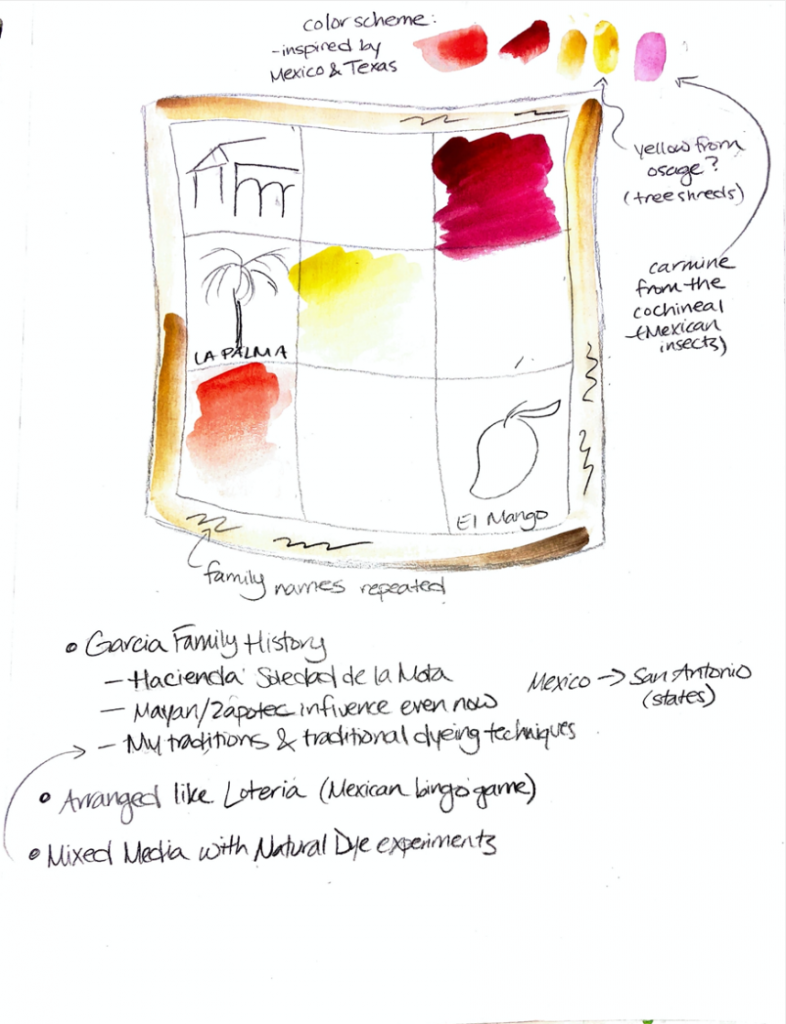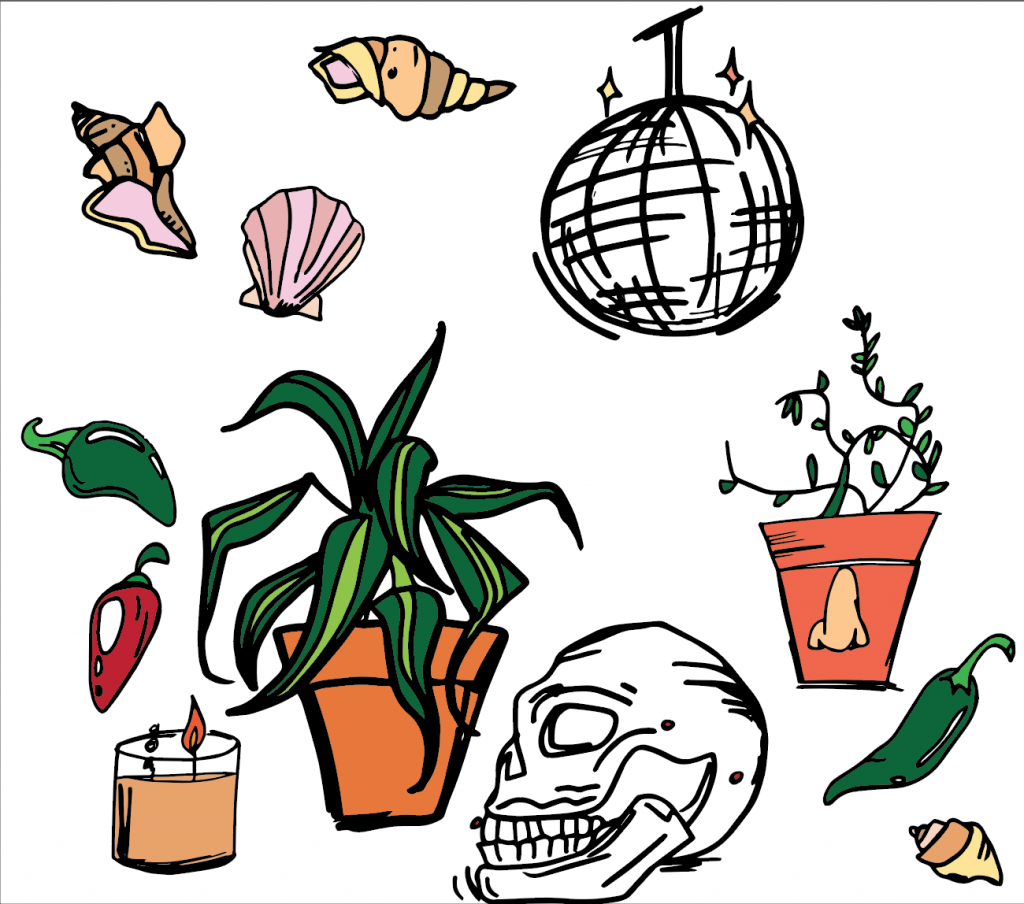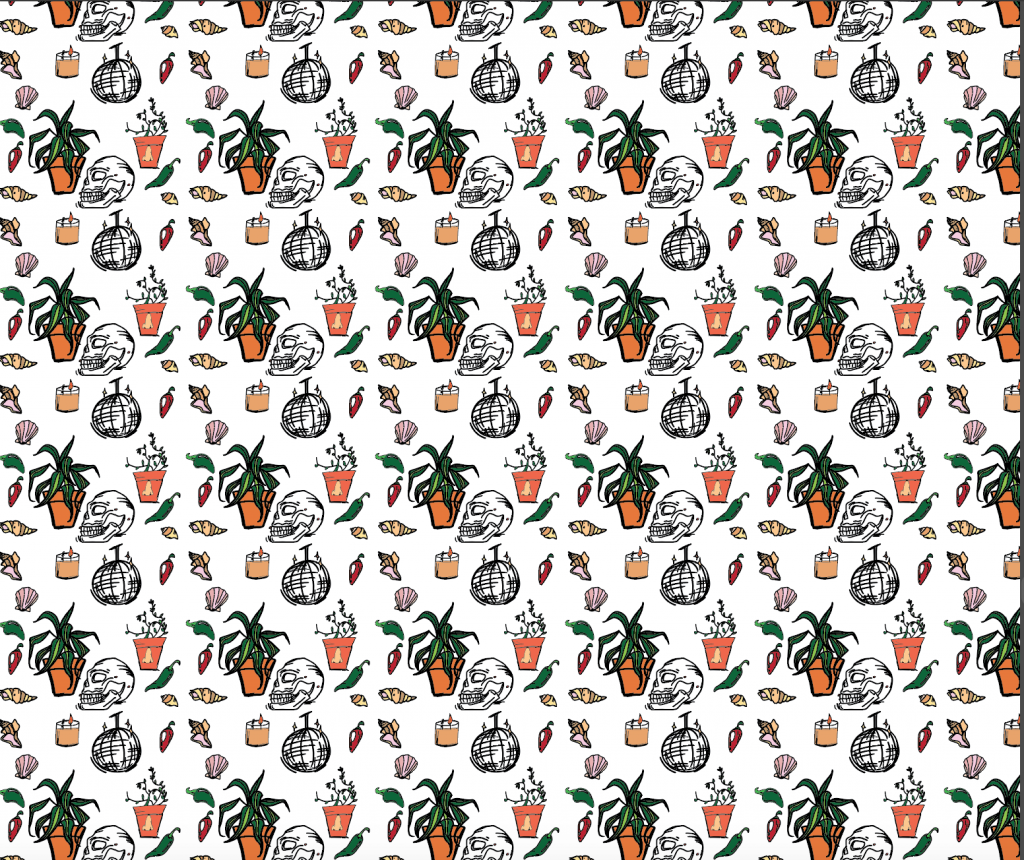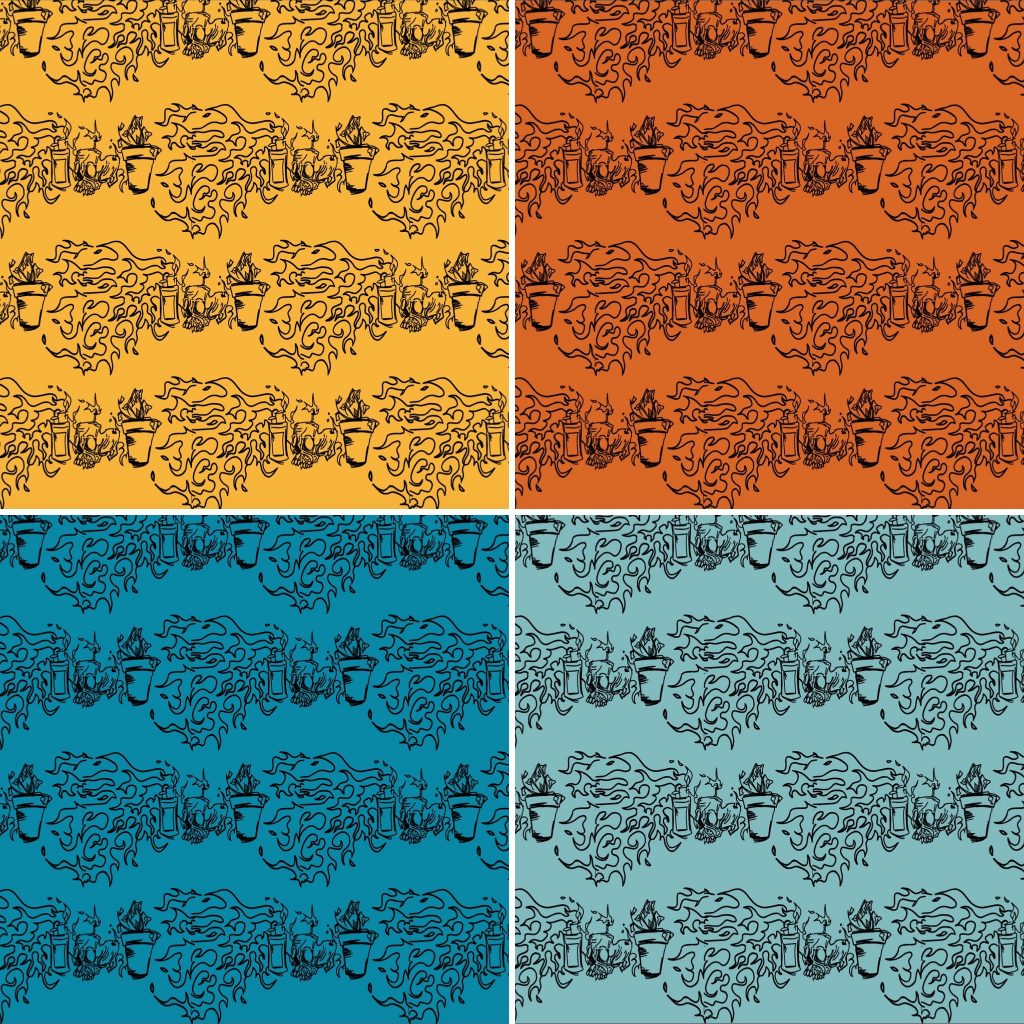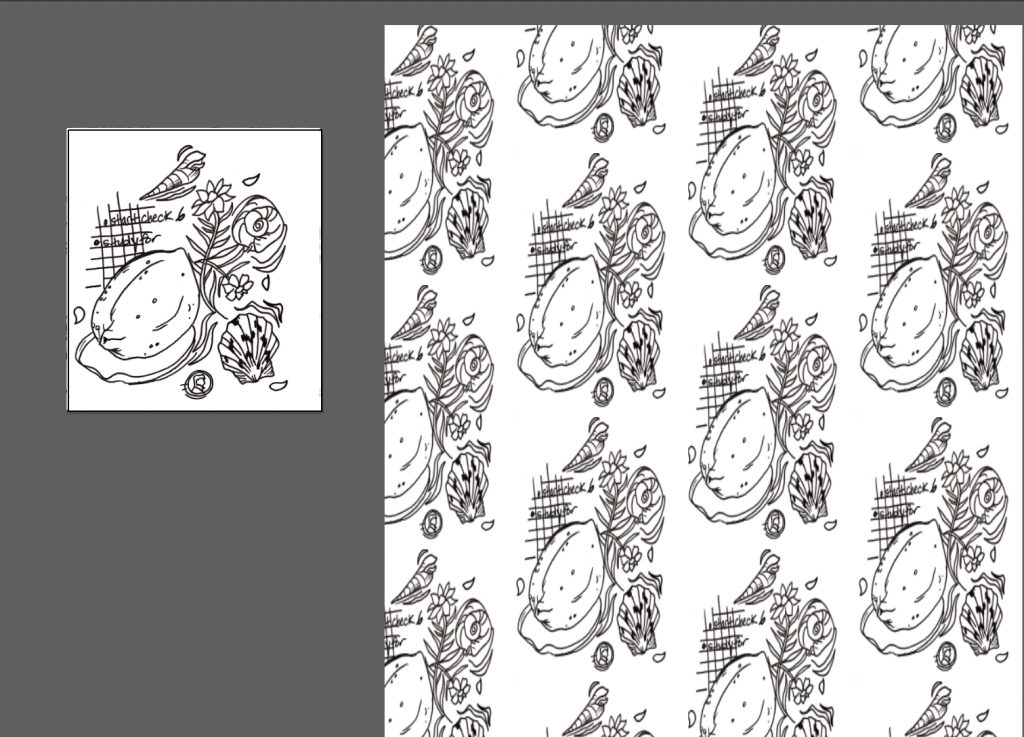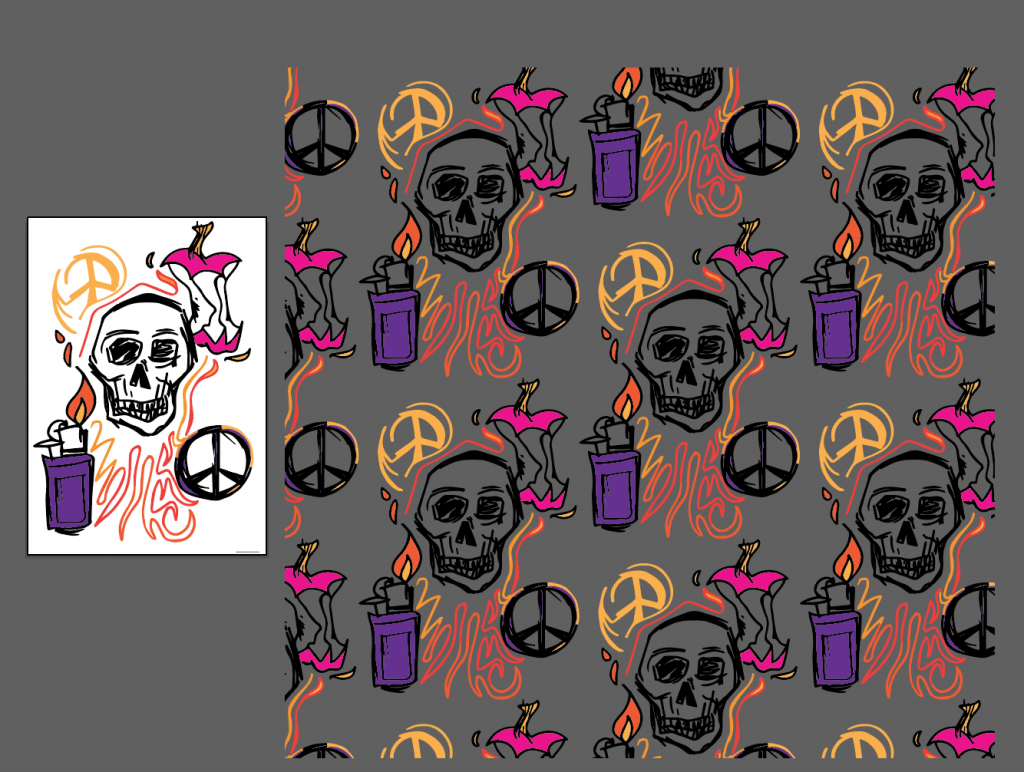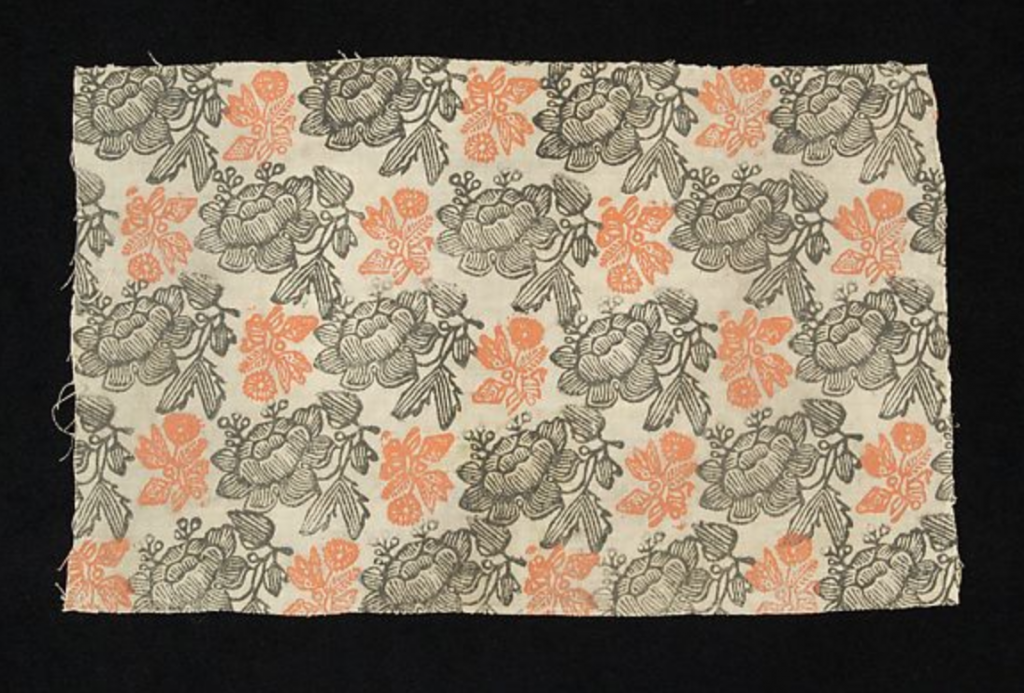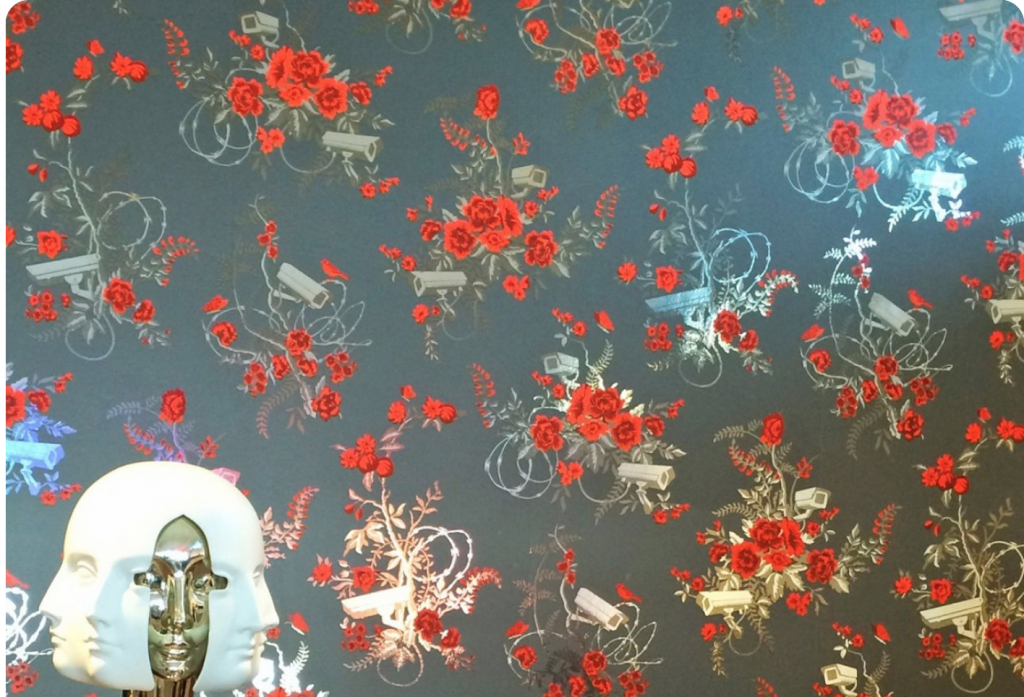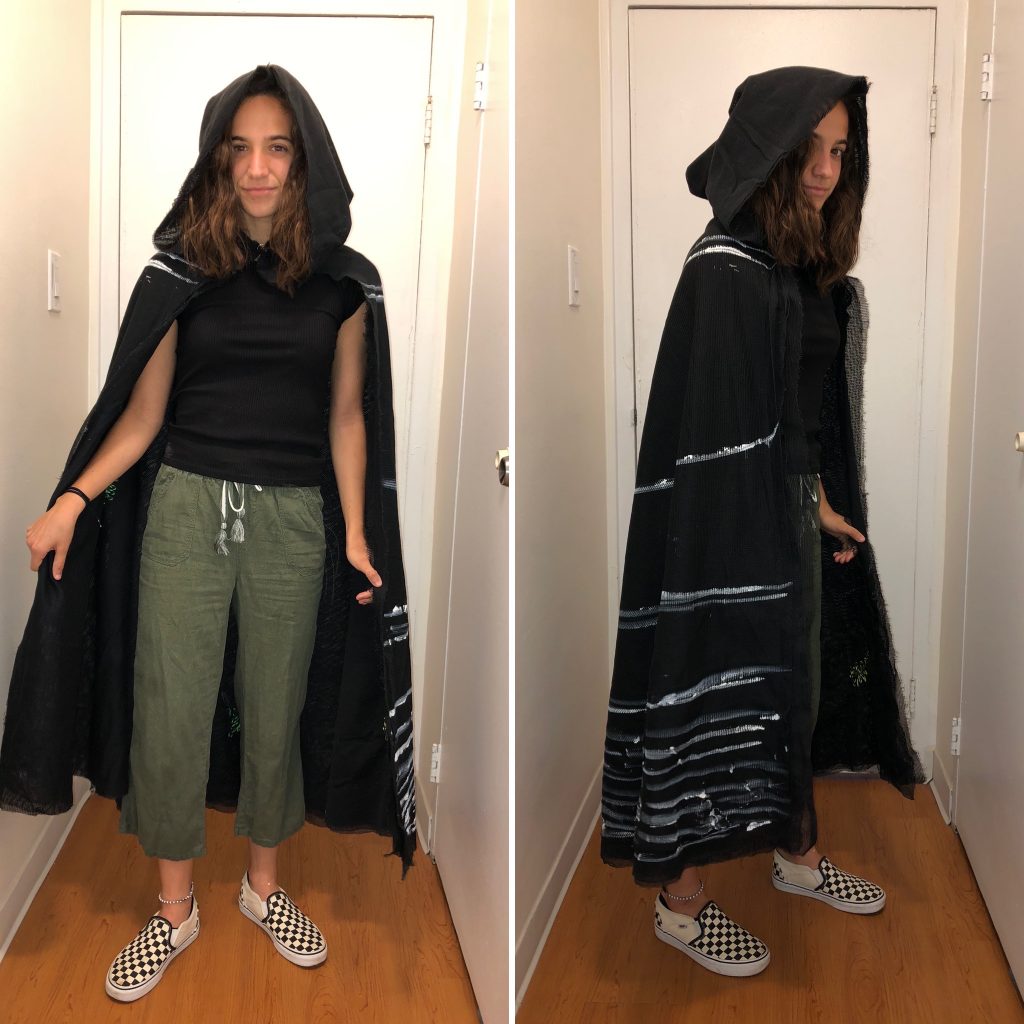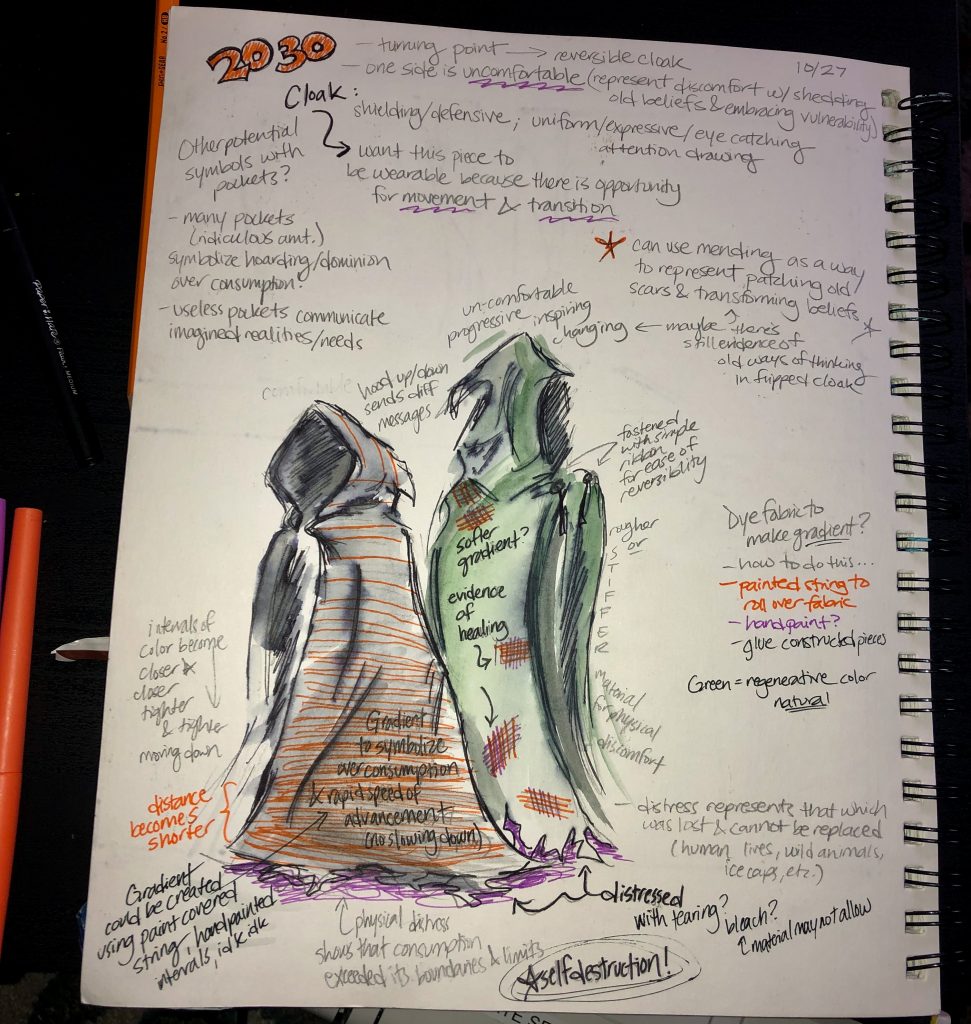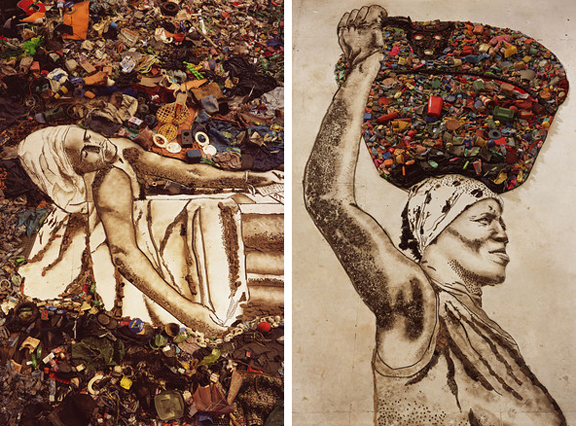For this project, I wanted to use textiles as a way to connect with my family and to experiment with natural dyes. I talked to my extended family about some of the Garcia Lore that’s been told for generations. It was exciting to hear the different pieces of the narrative and string all of the events together through the past into the present. I decided to communicate my Mexican heritage with a patchwork quilt, and the biggest challenge I ran into was coming up with meaningful symbols for our complex history.
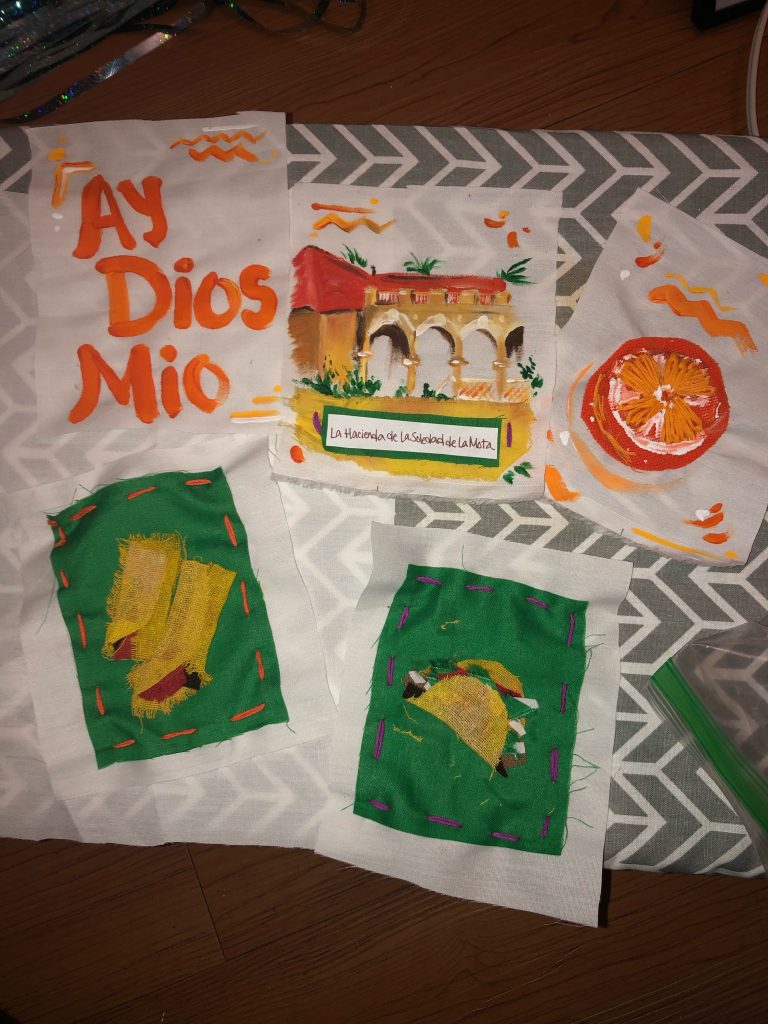
Conceptualizing family stories that have never been recorded in writing and turning abstract emotions into something tangible was difficult. I decided on a color scheme to give myself some constraints, and I also decided to make each appliqué patch a “matching pair” so that uniformity would be maintained in the final quilt.
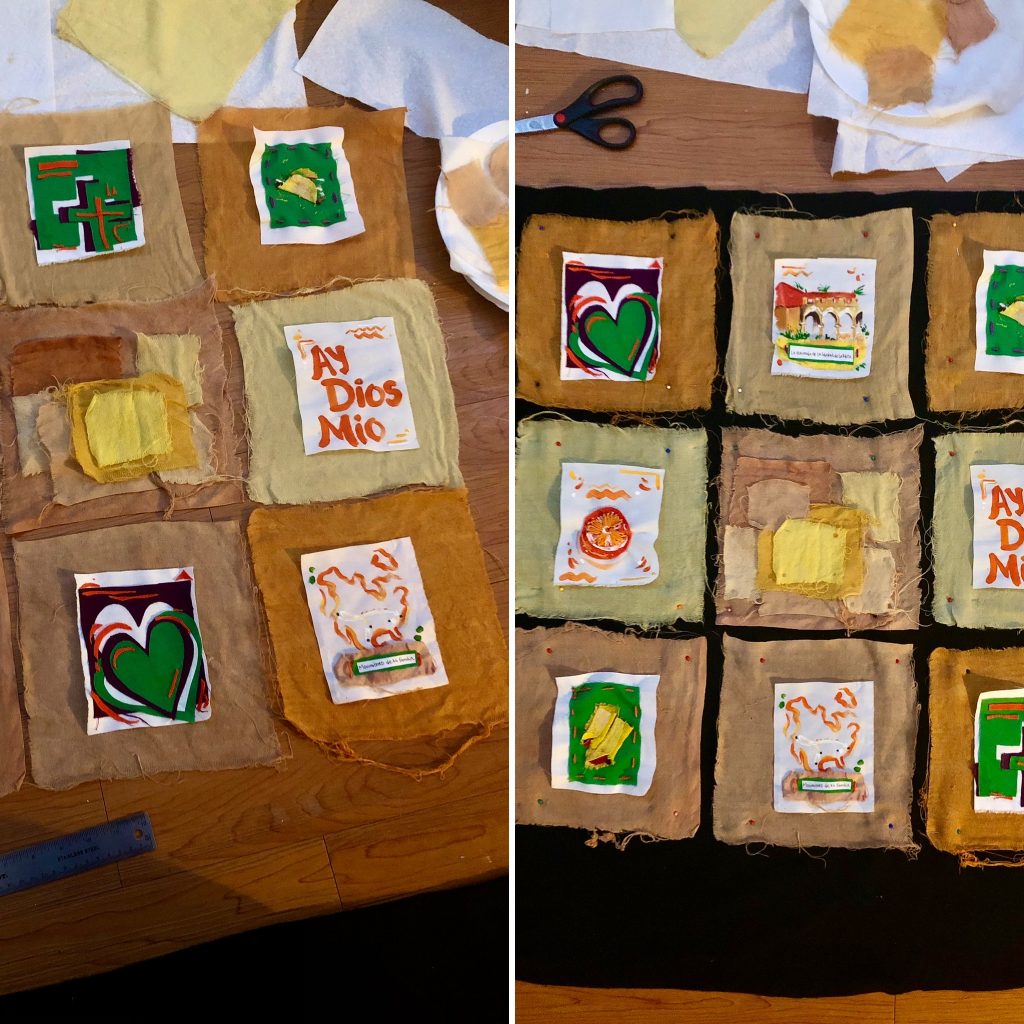
I feel the largest connection to my Mexican heritage in the kitchen, so I chose onion skins, cumin, and chili powder as some of my natural dye ingredients because they are also key ingredients in my abuelita’s famous Spanish rice. I added the skins from about 7 yellow onions and 1/4 cup of each spice to roughly 6 cups of water. I boiled and simmered the ingredients to extract the pigment and checked the color as I stirred. The onion skins colored the water bath an unexpected but fabulous deep red. I wasn’t sure what color cumin would dye my fabric, but judging from the tannish color of the simmering water, I hypothesized that it would produce a nice golden brown. I was surprised, however, when the resulting color after 30 minutes turned out to be a bright highlighter yellow. I also dyed mordanted wool squares with cinnamon and cocoa powder (ingredients in a spiced Mexican hot chocolate). Each of the wool squares remained in the dye baths for roughly 60 minutes.*
*The chili and cocoa powder squares soaked for 90 min

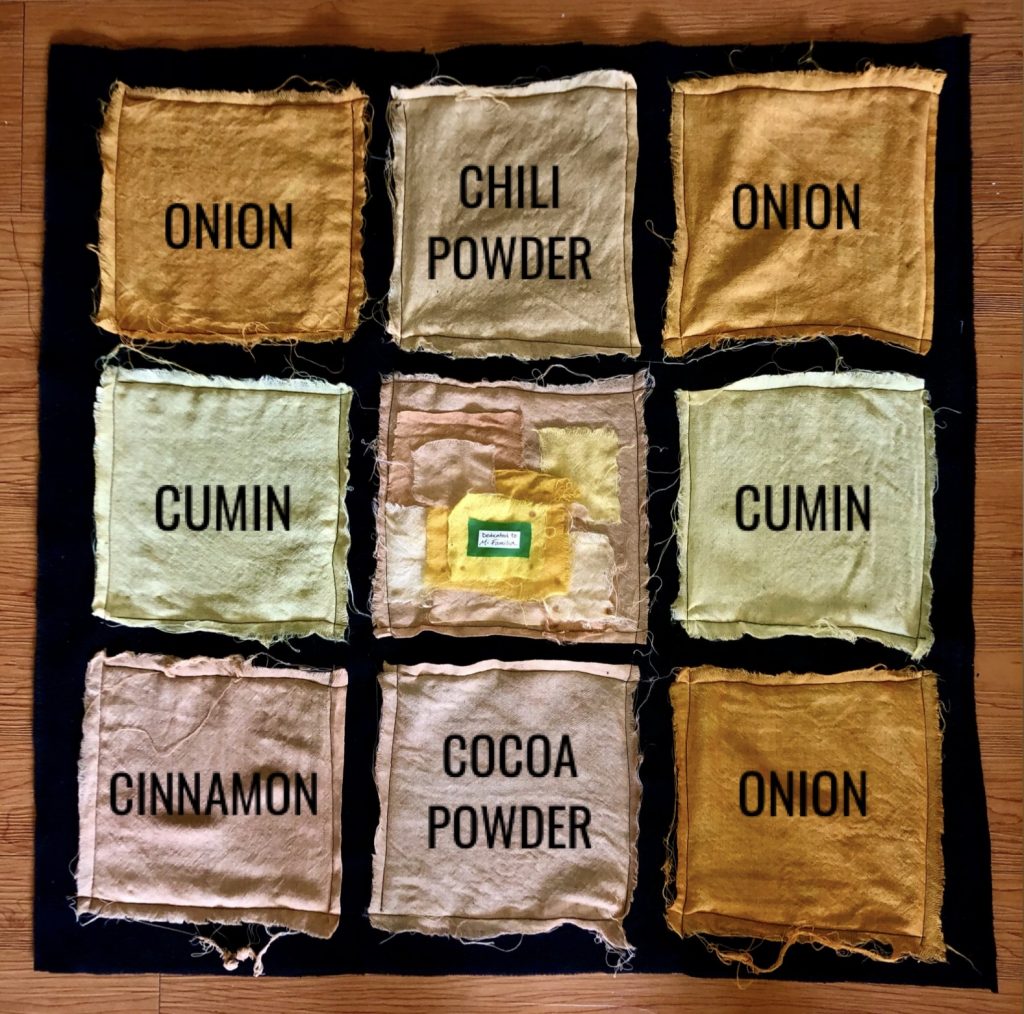
I also struggled with deciding what to do with the center square of my quilt. I ended up taking inspiration from my dye test trial scraps and collaging them into a dedication statement. I wanted the center to tie everything together. I also decided to leave the edges of my wool squares raw for this reason. The rawness speaks to my family’s dynamic, and the effect is striking against the black fleece backing.
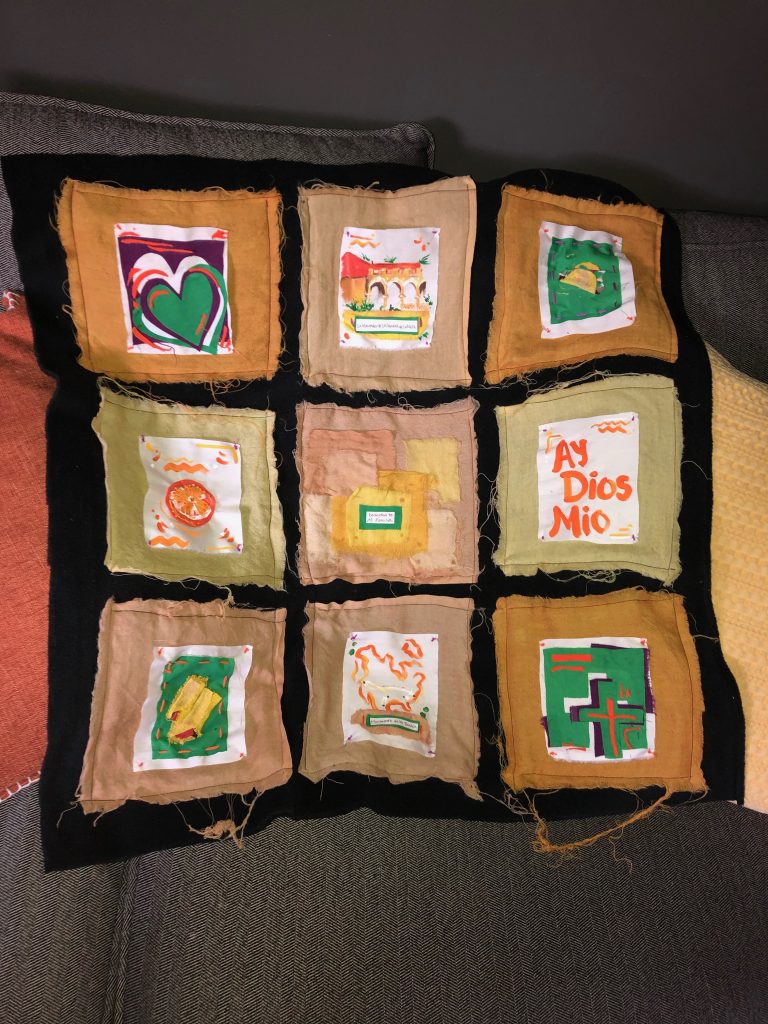
Overall, I’m really proud of this piece. I was able to use a cumulation of the skills/techniques that I learned throughout this course, and I was able to learn even more about science and history as I created it. I’m excited to share this with my family 🙂

